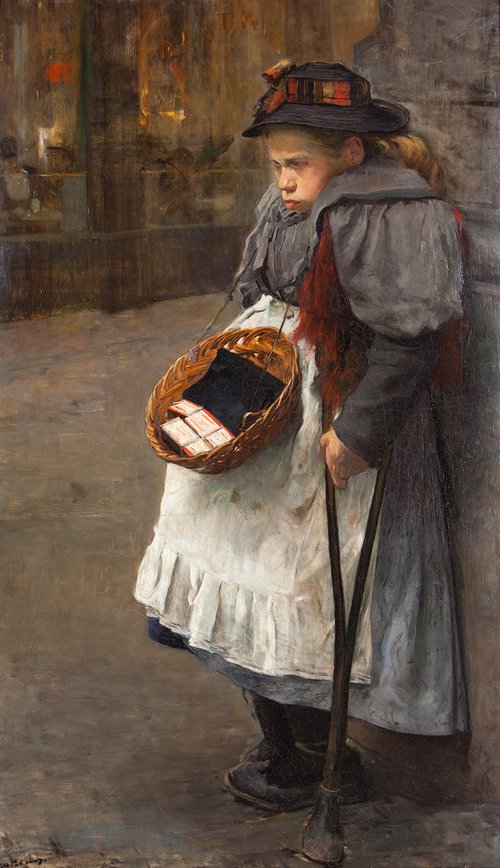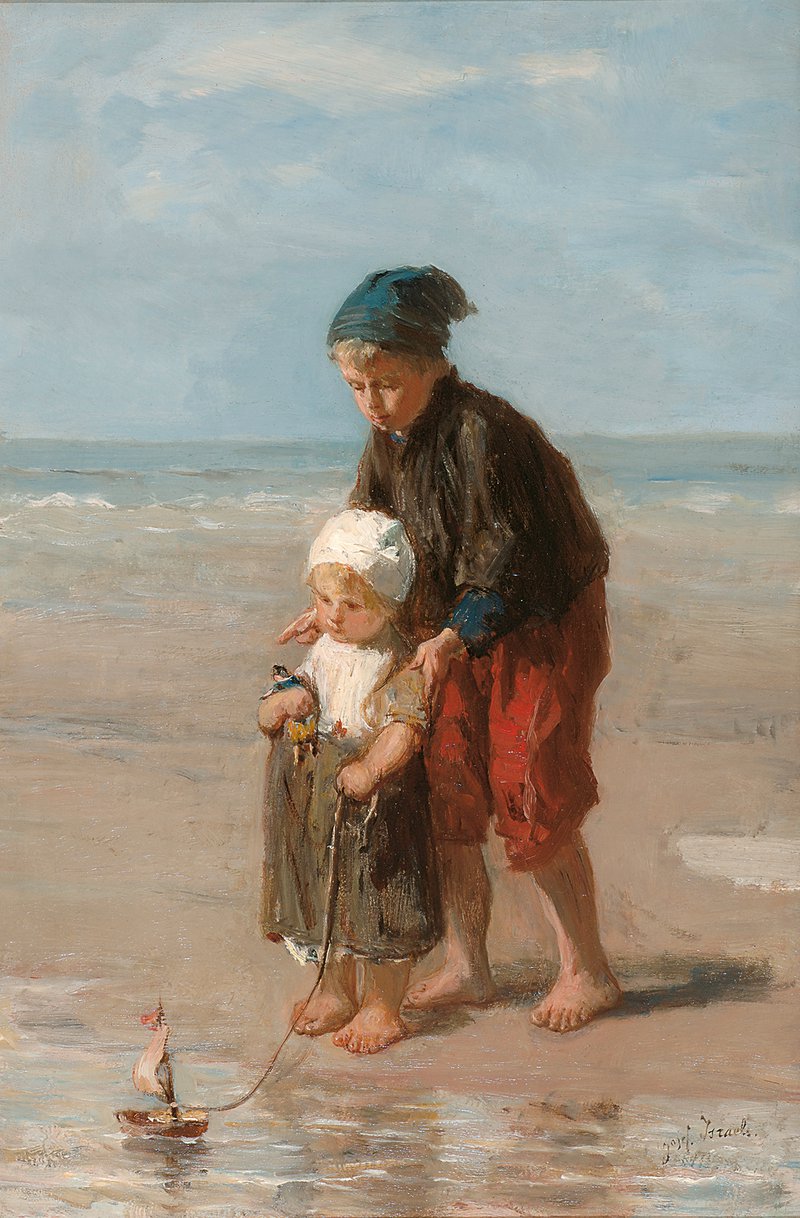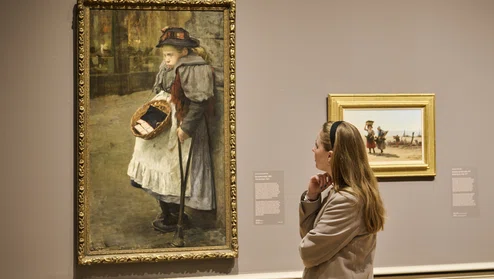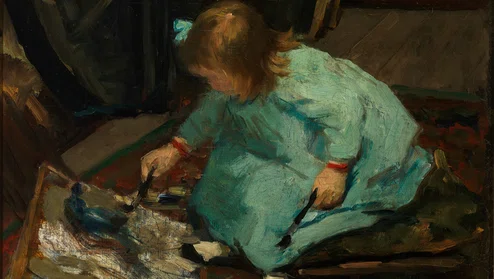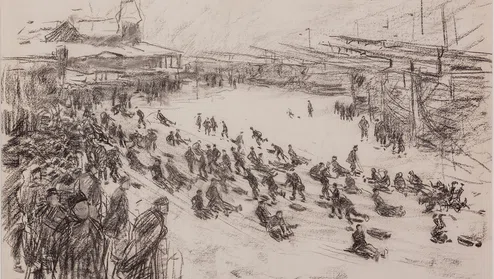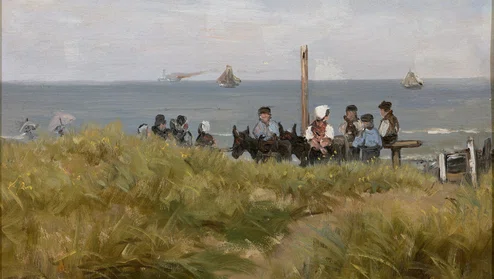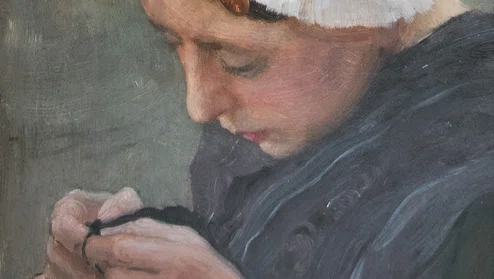Trailer
Get an impression of the exhibition
Video: Skip Intro
Put to work at an early age
Labour and handiwork
Van Houten’s child labour law
You may be wondering if it was even legal at the time for children to work. After all, the well-known law against child labour in the Netherlands – nicknamed the Kinderwetje van Van Houten – was adopted in 1874, making it precisely 150 years old in 2024. But this ban on child labour was not an all-out prohibition. The law, put forth by Dutch politician Samuel van Houten (who was Sientje Mesdag-van Houten’s brother), only outlawed factory work for children under the age of 12. It did not cover ‘domestic and personal services and/or agricultural labour’ provided by children.
Picturesque and popular
In the paintings of the Hague School painters, we see children and teens still working alongside adults both in and outside the context of the family. The children whom the artists found picturesque were dressed in simple or even shabby clothing. These young people helped out on the farm, rented donkeys to bathers on the beach, performed manual labour or handiwork.
Scenes of this type were popular and fetched good prices in galleries. They were praised for capturing the ‘pure’ beauty of the simple life.
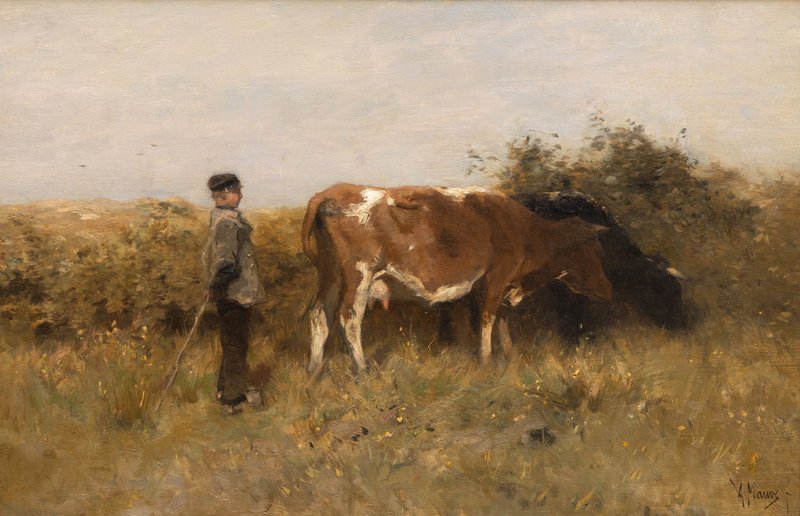
Anton Mauve, Young Cowherd, undated, oil on canvas, 51 x 81 cm, private collection, photo: Venduehuis Auctioneers Den Haag
Artists’ offspring
A carefree childhood
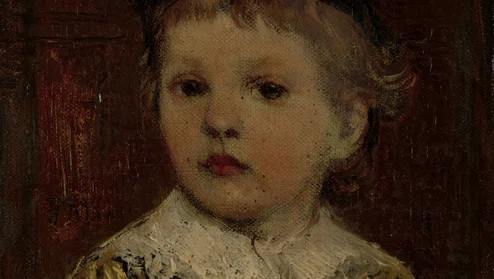
Intimate portraits
The children of the Hague School painters often led carefree lives: unlike their working peers, their existence was not geared toward survival. In the intimate portraits of them painted by their parents, we see the children making music, drawing or reading. We see daughters in immaculate white dresses and a son playing with a toy dog. These portraits were intended primarily for personal ends, although some painters did use their children as models for commercial work as well.
Ode to Klaasje Mesdag
This exhibition devotes particular attention to Klaasje, the only child of Hendrik Willem Mesdag and Sientje Mesdag-Van Houten. Klaasje died quite young, before his 8th birthday. A few of Klaasje’s childhood drawings have been preserved in one of Mesdag’s sketchbooks. These remarkable drawings are now being displayed for the first time, together with family portraits and the Mesdag family’s own photo albums. The exhibition also includes a letter Klaasje wrote to his grandfather.
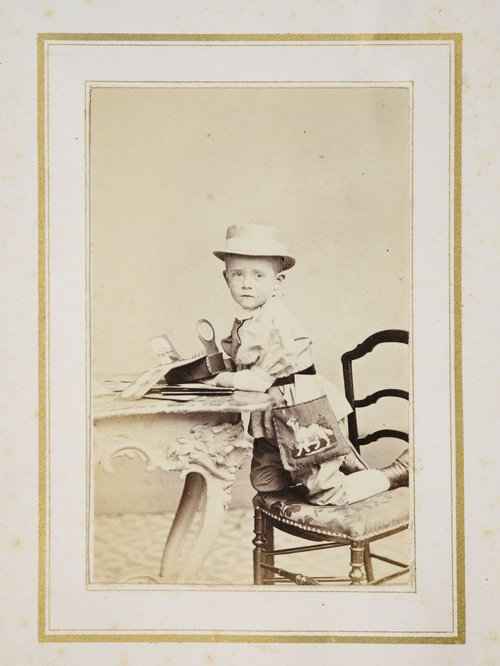
Portrait of Klaasje Mesdag, ca 1865, photo in photoalbum, Museum Panorama Mesdag, foto: Piet Gispen
Top image: Jacob Maris, Portrait of Willem, presumably Willem Matthijs Maris Jbzn, son of Jacob Maris, 1876, oil on panel, 14 x 11,8 cm, Rijksmuseum, Amsterdam – bequest of Mr and Mrs Drucker-Fraser, Montreux
Women
Marriage or life as an artist?
Children’s portraits were a popular theme among female artists such as Wally Moes, Henriette de Vries, Froukje Wartena and Barbara van Houten. Why, then, are there no portraits of their own children to be found?
The answer is as simple as it is shocking. Most of these artists chose to remain unmarried and to forego having children. At the time, it was considered inappropriate for a married woman to earn an income: only men were allowed to work for a living.
The exhibition devotes generous attention to these women and their paintings and drawings of other people’s children.
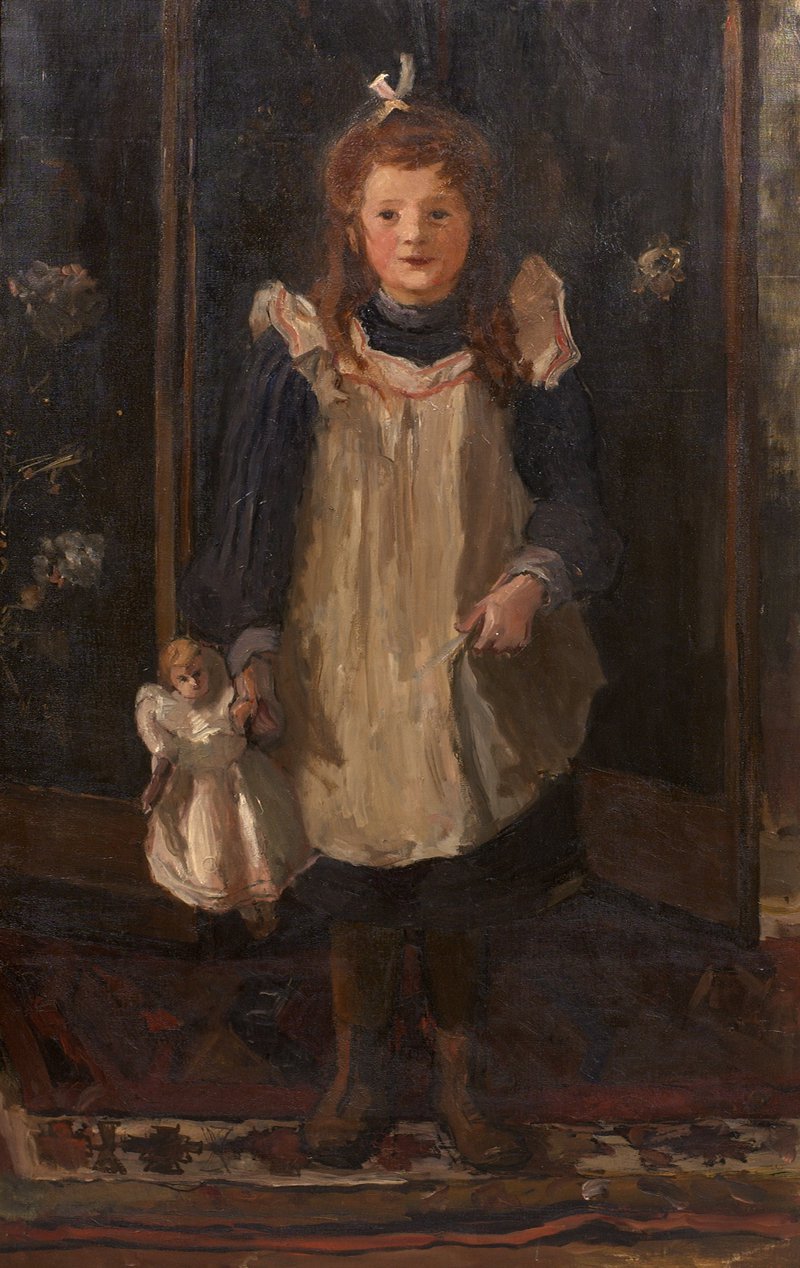
Barbara Elizabeth van Houten, Girl with doll, oil on canvas, 136 x 81 cm, Museum Panorama Mesdag
Book
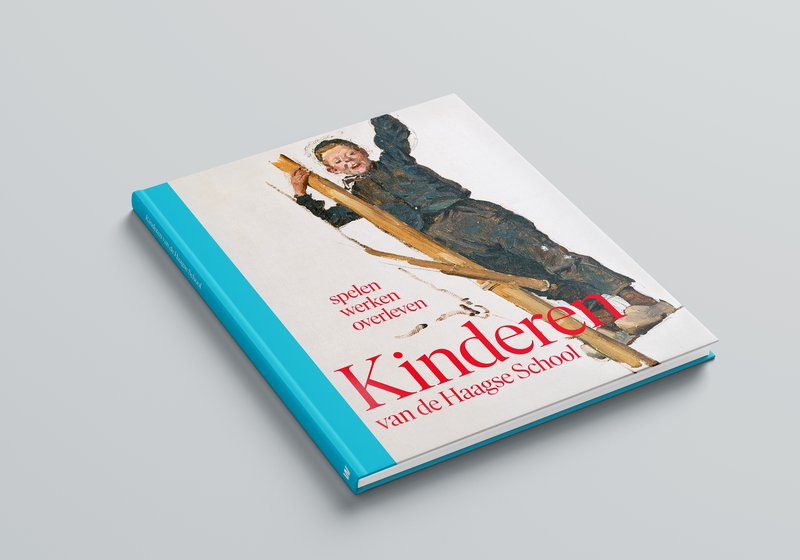
Richly illustrated exhibition publication
The exhibition will be accompanied by a richly illustrated publication that will cover every aspect of the exhibition, supplemented by historical background accounts and first-person texts.
The authors of the book are Adrienne Quarles van Ufford, Head of Museum Affairs and the curator of this exhibition, and Jeroen Kapelle, curator of 19th century works at RKD Netherlands Institute for Art History.
The book is being published by Uitgeverij Waanders.

